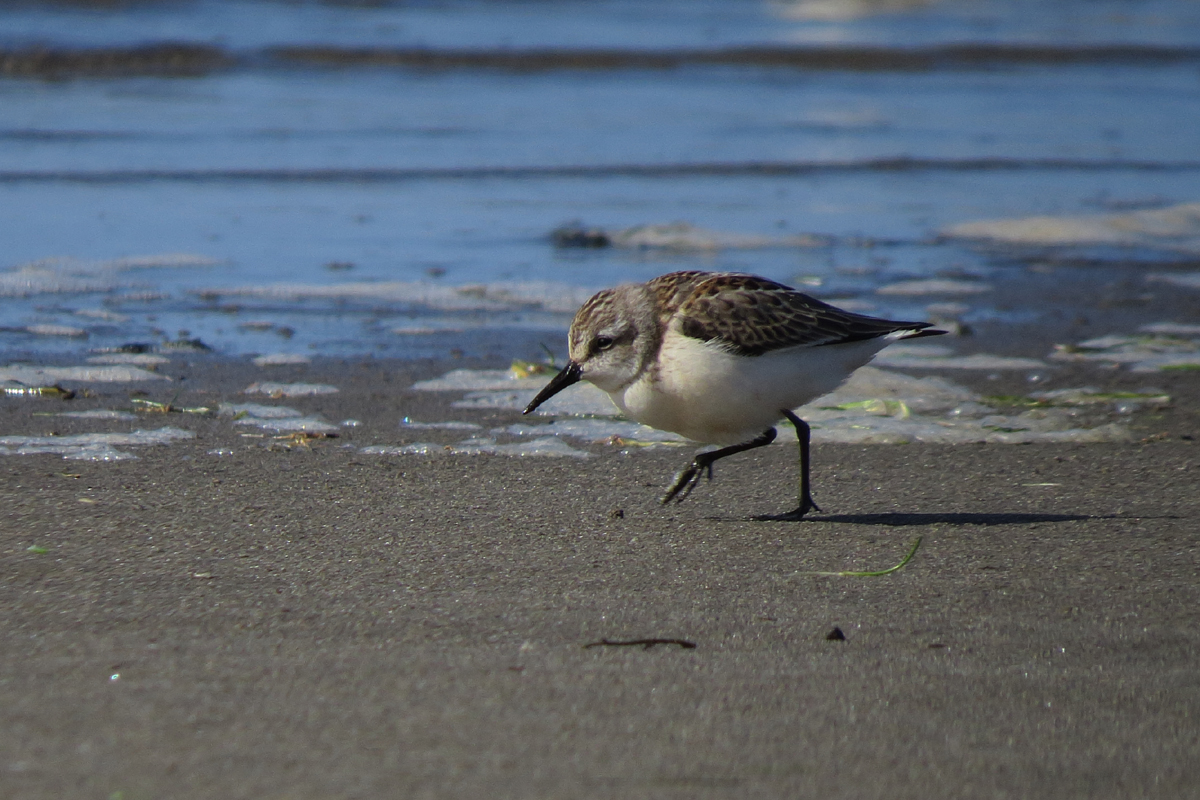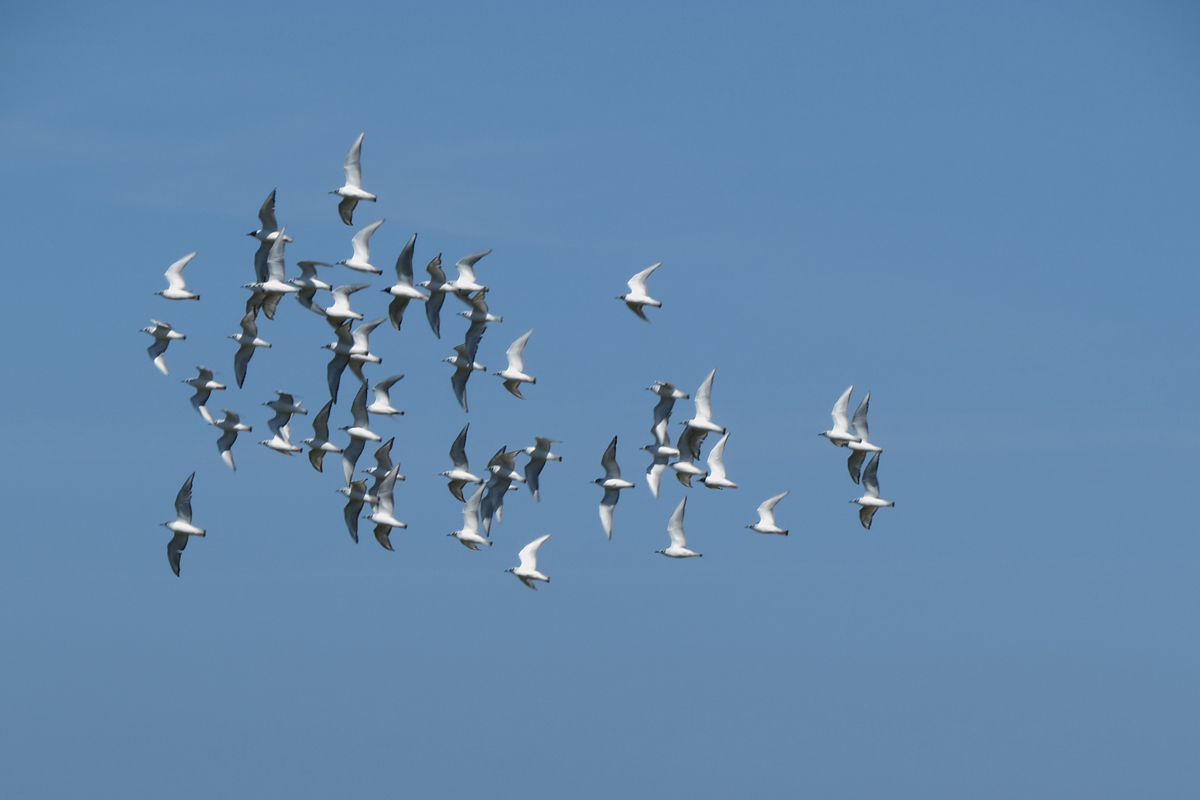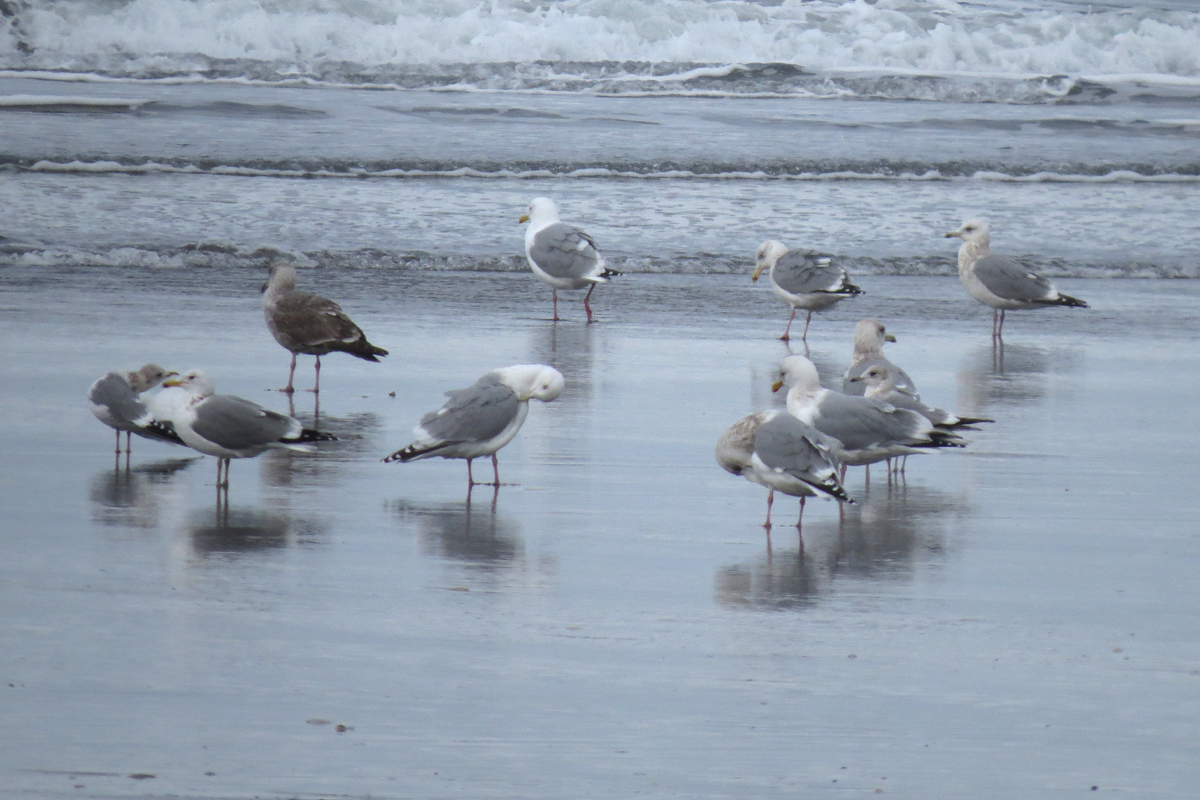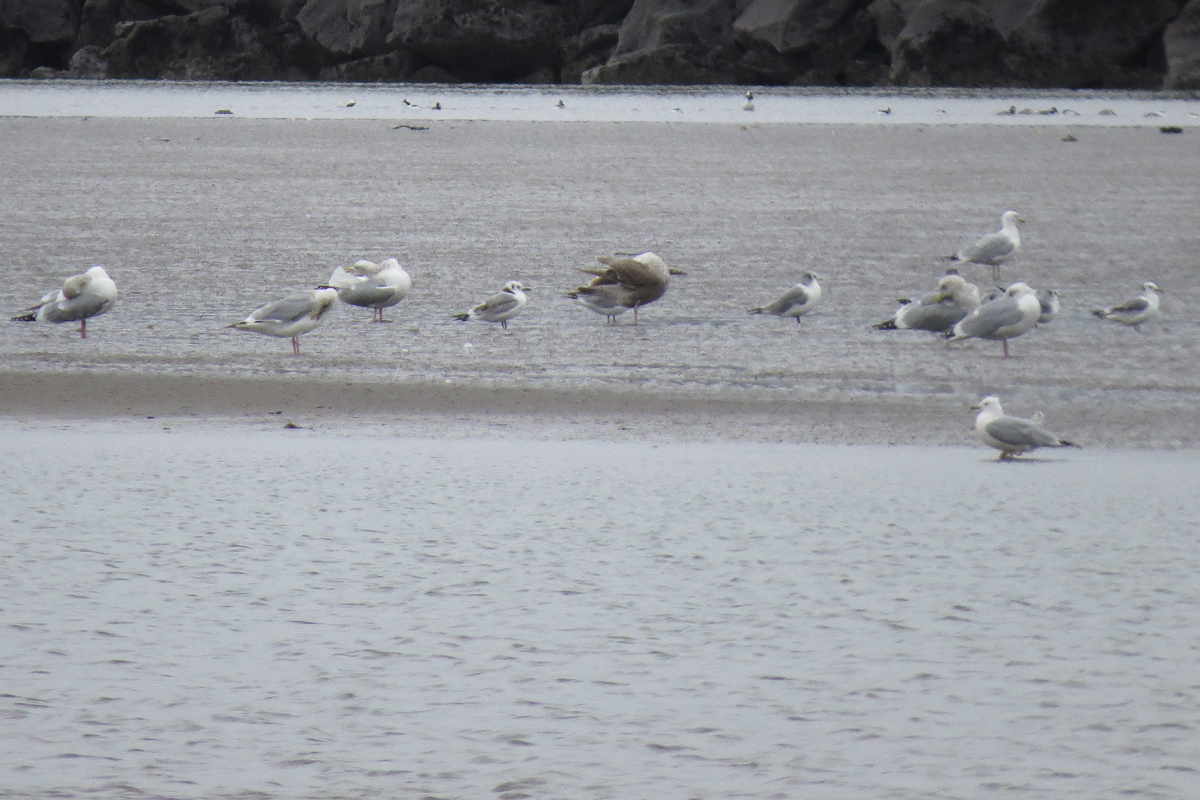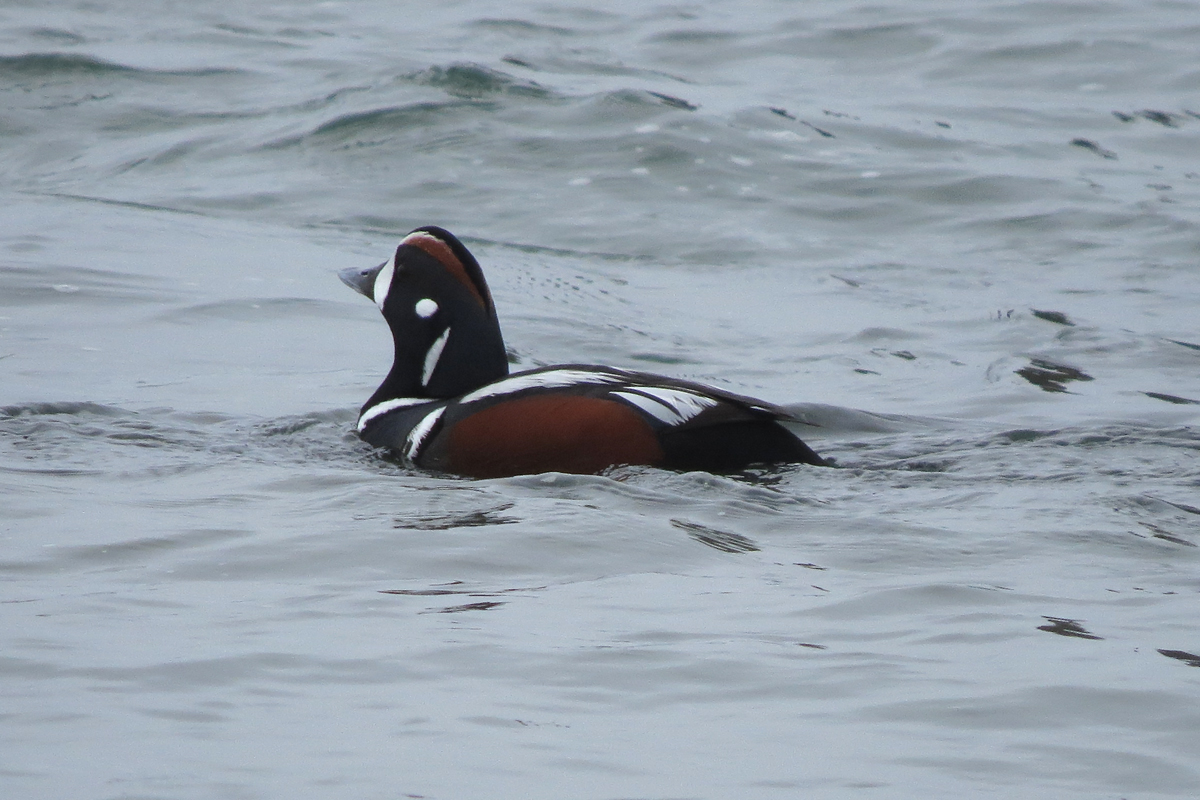I had the chance to visit Clatsop Spit at Fort Stevens State Park. Parking Lots C and D, the usual access points, are still compromised due to continued work on the south jetty of the Columbia. So the best place to access the beach along the Columbia River is the little road halfway in between the two parking lots. This road takes you to the access locally known as Social Security Beach.

One of the highlights of this trip was seeing many Snowy Plovers. This species just wasn’t found on the northern Oregon coast until a few years ago. It is great to see them making a comeback.
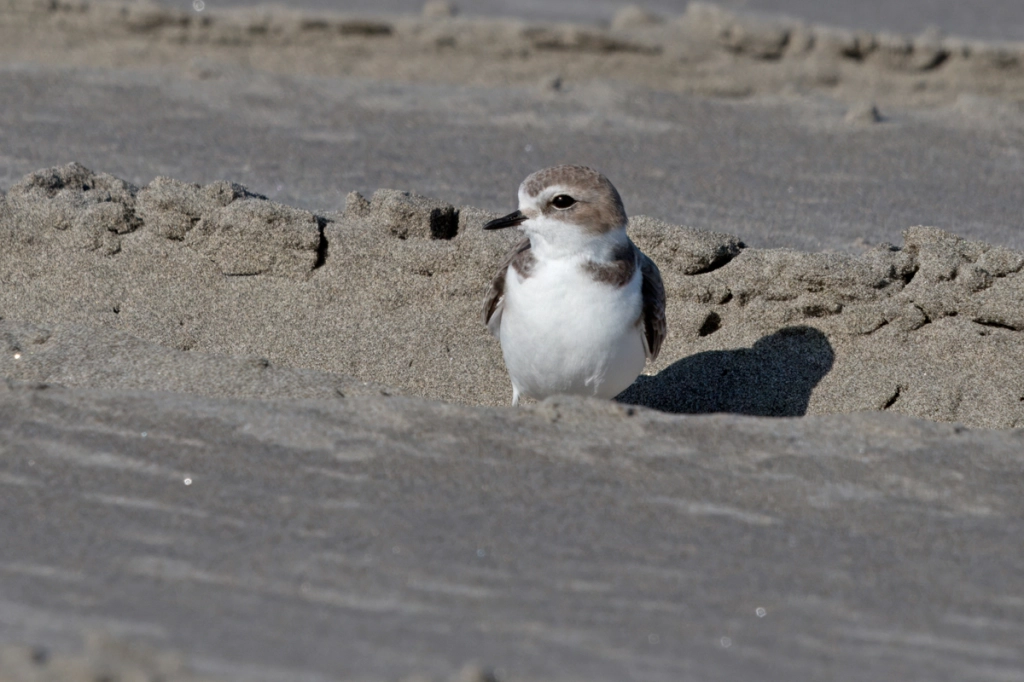
This Snowy Plover is sitting in a tire track from a large pickup that had just gone by. I really dislike that vehicles are allowed on so many beaches. Even if they are not directly squashing wildlife, they certainly disrupt and deface things. Baby Snowy Plovers have been known to get stuck in deep tire tracks.

While not threatened like the Snowy Plover, Black-bellied Plovers are always nice to see.

The Black-bellied Plovers were more wary and harder to approach than the Snowy Plovers.

This blurry photo shows the black axillaries (wing pits) of a Black-bellied Plover. This mark makes the species identifiable from a great distance.

The most common shorebird of the day was Dunlin. While they don’t sport their bold markings this time of year, the dull brownish upperparts and bright white underparts are distinctive.

A lone Dunlin following a group of Sanderlings
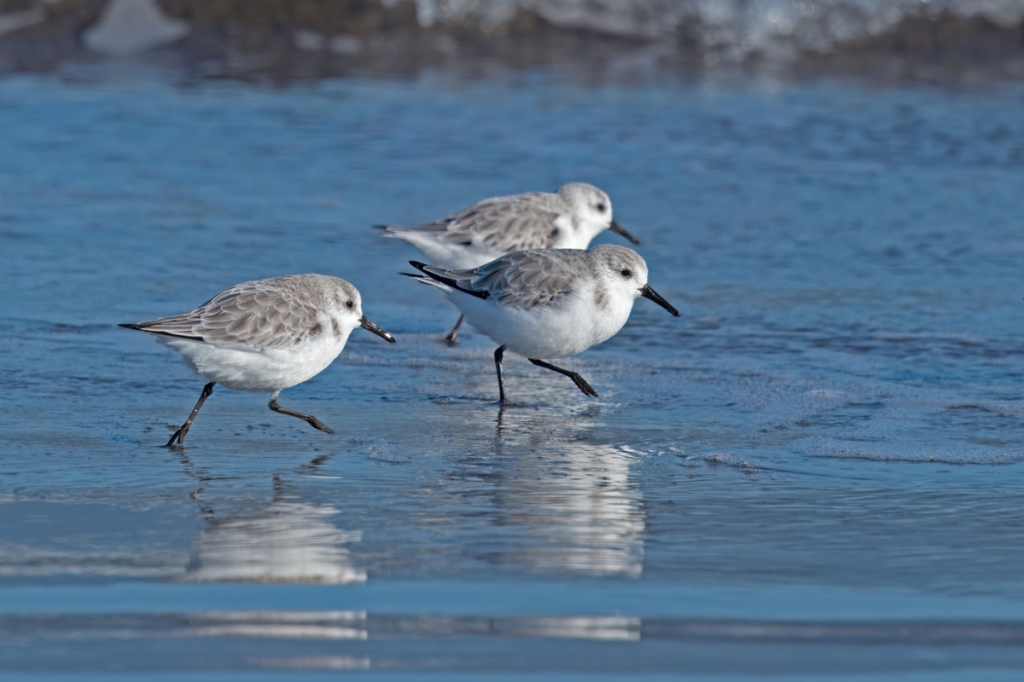
More Sanderlings

Of course you have to stop and appreciate the gulls this time of year. Here is a dapper pair of Herring Gulls.
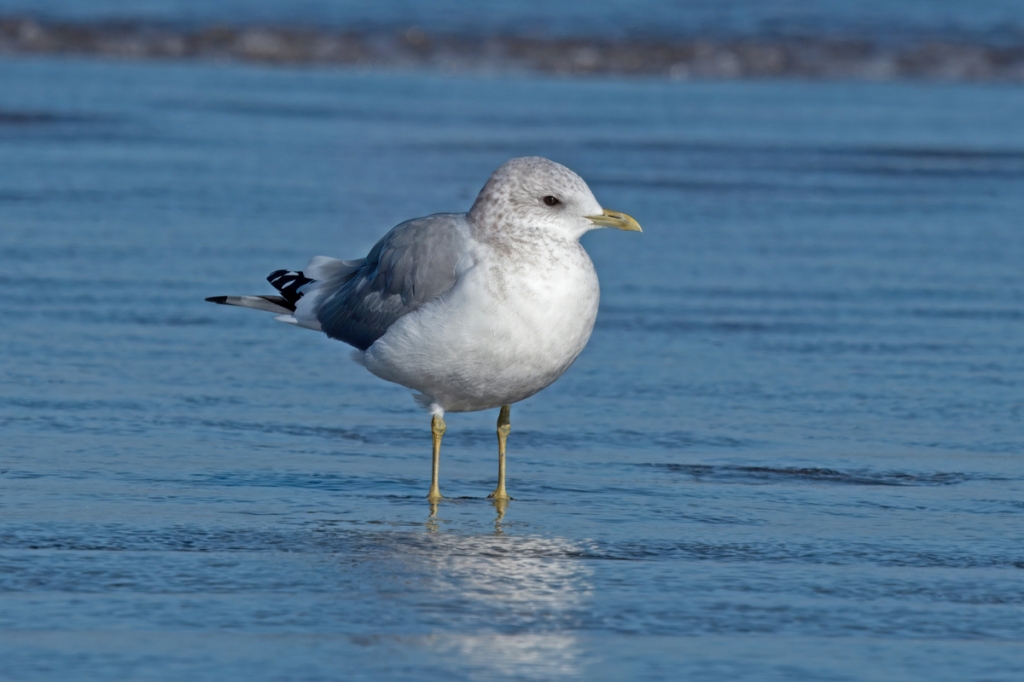
Short-billed Gull, until recently called Mew Gull. Some feel that Mew Gull is a better name.

A lone California Gull stands in front of a group of Short-billed Gulls.
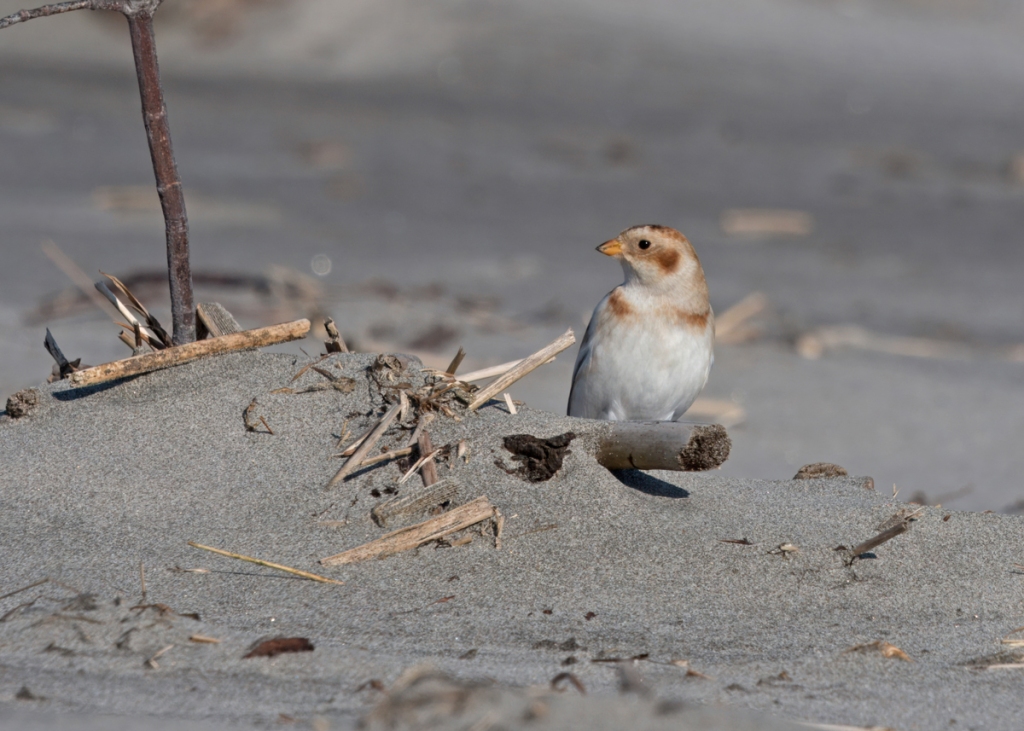
Probably the best bird of the trip was Snow Bunting. It is not unusual to find a few of these birds on the coast in winter, but it is hard to get them to sit still long enough for a photo.
Work on the jetty is scheduled to be completed by the fall of 2025. It will be nice to have easy access to all of Clatsop Spit again.
Happy Solstice

 I went to Fort Stevens to look for shorebirds this week. The main push of spring migrants hadn’t arrived yet, but numbers were definitely on the increase. I was pleased that I timed the tide correctly at Parking Lot D. This little bay fills quickly when the tide comes in, so it was nice to have extensive mudflats on this visit.
I went to Fort Stevens to look for shorebirds this week. The main push of spring migrants hadn’t arrived yet, but numbers were definitely on the increase. I was pleased that I timed the tide correctly at Parking Lot D. This little bay fills quickly when the tide comes in, so it was nice to have extensive mudflats on this visit. Semipalmated Plovers enjoying the mud
Semipalmated Plovers enjoying the mud This spot often hosts good numbers of Caspian Terns. Several birds were seen courting.
This spot often hosts good numbers of Caspian Terns. Several birds were seen courting. Of the six Black-bellied Plovers I saw that day, only one was in full breeding plumage. The others, including this bird, were still in molt.
Of the six Black-bellied Plovers I saw that day, only one was in full breeding plumage. The others, including this bird, were still in molt. The beach hosted good numbers of Whimbrels.
The beach hosted good numbers of Whimbrels.
 The most common shorebird on the beach that day was Sanderling. Most were still in winter plumage.
The most common shorebird on the beach that day was Sanderling. Most were still in winter plumage.
















